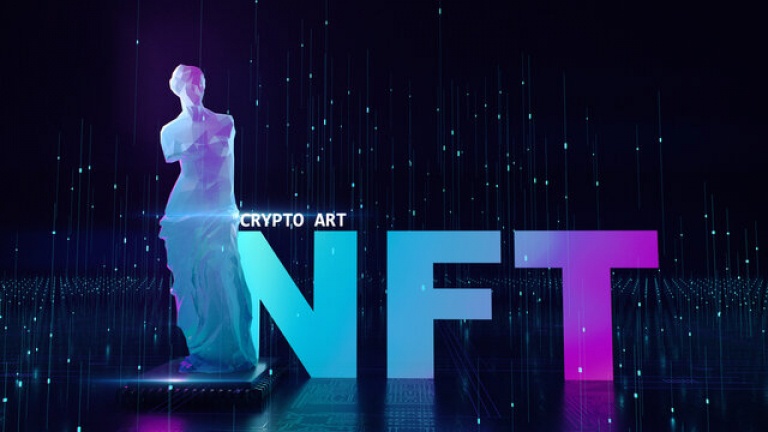The rise of Non-Fungible Tokens (NFTs) has revolutionized the art world, enabling artists to tokenize and sell their digital creations like never before. As NFTs gain mainstream attention, the demand for NFT art marketplaces is surging. If you're considering entering this exciting market, building an NFT art marketplace can be a game-changer. In this blog, we will explore the key aspects of NFT art marketplace development, from understanding NFTs to building robust platforms that empower artists and collectors in the digital art space.
Understanding NFTs and Their Significance
To develop a successful NFT art marketplace, it's crucial to grasp the fundamentals of Non-Fungible Tokens. NFTs are unique digital assets that represent ownership or proof of authenticity for a specific item, such as art, music, or collectibles. Unlike cryptocurrencies, NFTs cannot be exchanged on a one-to-one basis. They are indivisible and distinguishable, making each NFT one-of-a-kind. This uniqueness and scarcity are what give NFTs their value and appeal. By understanding the concept of NFTs and their significance, you can lay a solid foundation for your marketplace development.
Defining Your NFT Art Marketplace's Vision
Before diving into the development process, define the vision and objectives of your NFT art marketplace. Determine your target audience—whether it's artists, collectors, or both—and identify the unique value proposition your marketplace will offer. Will you focus on a specific genre or aim to be a diverse platform? Consider factors such as user experience, transparency, security, and community engagement. Having a clear vision will guide your decision-making throughout the development process and enable you to create an appealing platform that stands out in the competitive NFT art market.
Designing an Intuitive User Interface
A user-friendly and intuitive interface is vital for attracting and retaining users on your NFT art marketplace. Design a clean, visually appealing layout that showcases artwork effectively. Implement search and filtering functionalities, enabling users to discover and explore NFTs easily. Consider integrating features like artist profiles, collections, and customizable galleries to enhance the browsing experience. Prioritize simplicity, responsiveness, and seamless navigation, ensuring that users can effortlessly engage with your marketplace and enjoy a smooth transaction process.
Ensuring Scalability and Security
As your NFT art marketplace grows, it is crucial to ensure scalability and security. Implement a robust infrastructure capable of handling a large number of users and high transaction volumes. Leverage blockchain technology for transparency, immutability, and secure ownership verification. Choose a suitable blockchain platform, such as Ethereum or Binance Smart Chain, considering factors like transaction fees and ecosystem support. Implement strong security measures to protect user data, funds, and intellectual property rights. Conduct thorough security audits and consider smart contract escrow services to enhance trust and mitigate potential risks.
Streamlining the NFT Minting and Listing Process
Simplifying the NFT minting and listing process is essential for artists and collectors on your marketplace. Provide a user-friendly interface for artists to mint their NFTs easily, ensuring smooth token creation and metadata uploading. Enable artists to set royalty fees, allowing them to earn royalties on secondary sales. Implement clear guidelines and verification processes to maintain quality standards. For collectors, ensure a straightforward listing process with options for bidding or fixed pricing. Automate the transaction process, including the settlement and transfer of ownership upon successful sales.
Foster Community Engagement and Marketing
Building a vibrant community around your NFT art marketplace is crucial for its success. Engage with artists and collectors through social media, forums, and newsletters. Organize events, collaborations, or contests to encourage active participation. Create a sense of exclusivity and value by featuring curated collections or spotlighting emerging artists. Collaborate with influencers, galleries, or brands to expand your reach. Emphasize transparency and authenticity, providing detailed information about artists, their backgrounds, and the uniqueness of their NFTs. By fostering community engagement and implementing effective marketing strategies, you can attract both artists and collectors to your NFT art marketplace.
Conclusion:
Building an NFT art marketplace presents an exciting opportunity to empower artists and collectors in the digital art space. By understanding the significance of NFTs, defining your marketplace's vision, designing an intuitive user interface, ensuring scalability and security, streamlining the NFT minting and listing process, and fostering community engagement, you can create a platform that unleashes the potential of digital creativity. Embrace the NFT revolution, and embark on the journey of developing an NFT art marketplace that contributes to the evolution of the art industry.


No comments yet